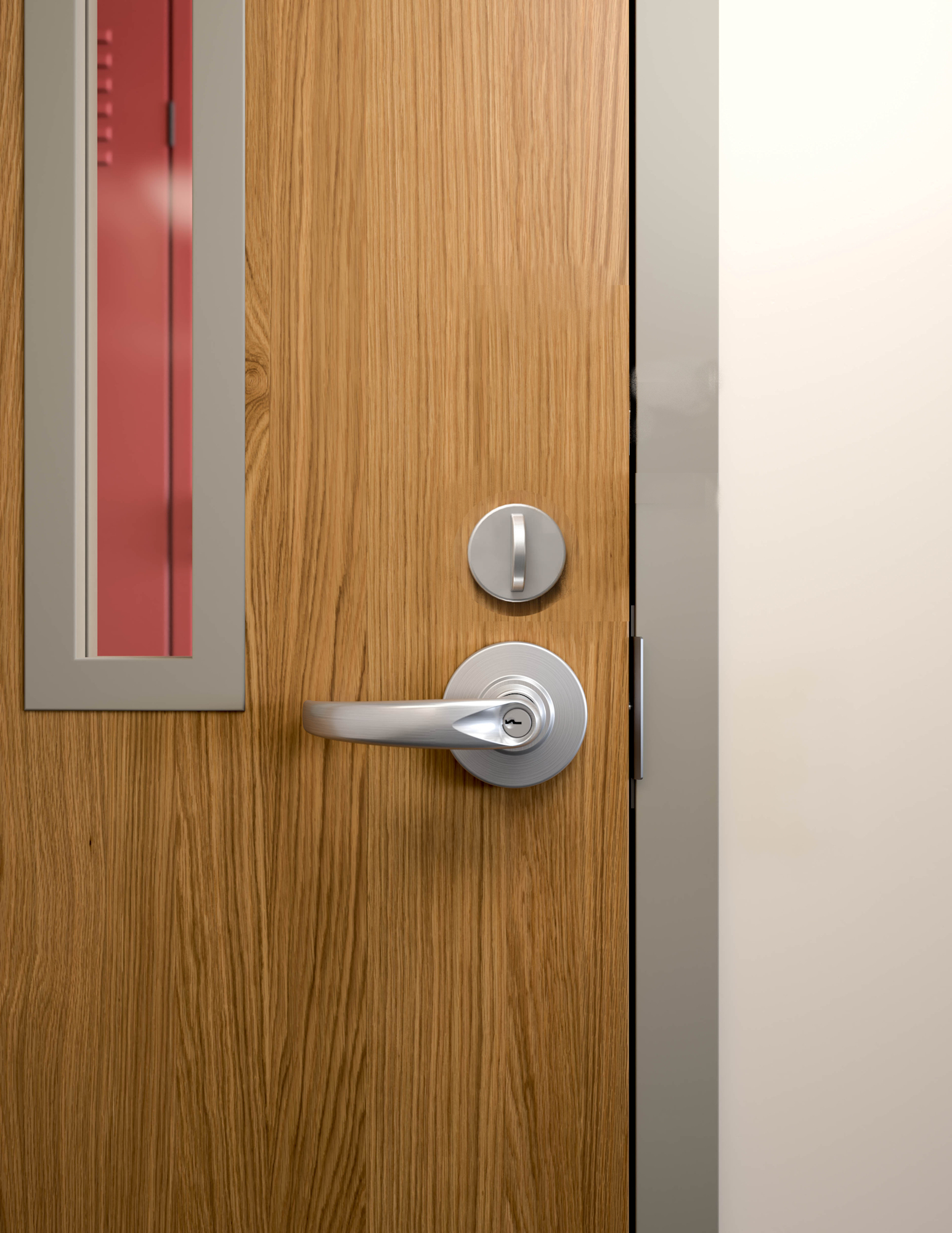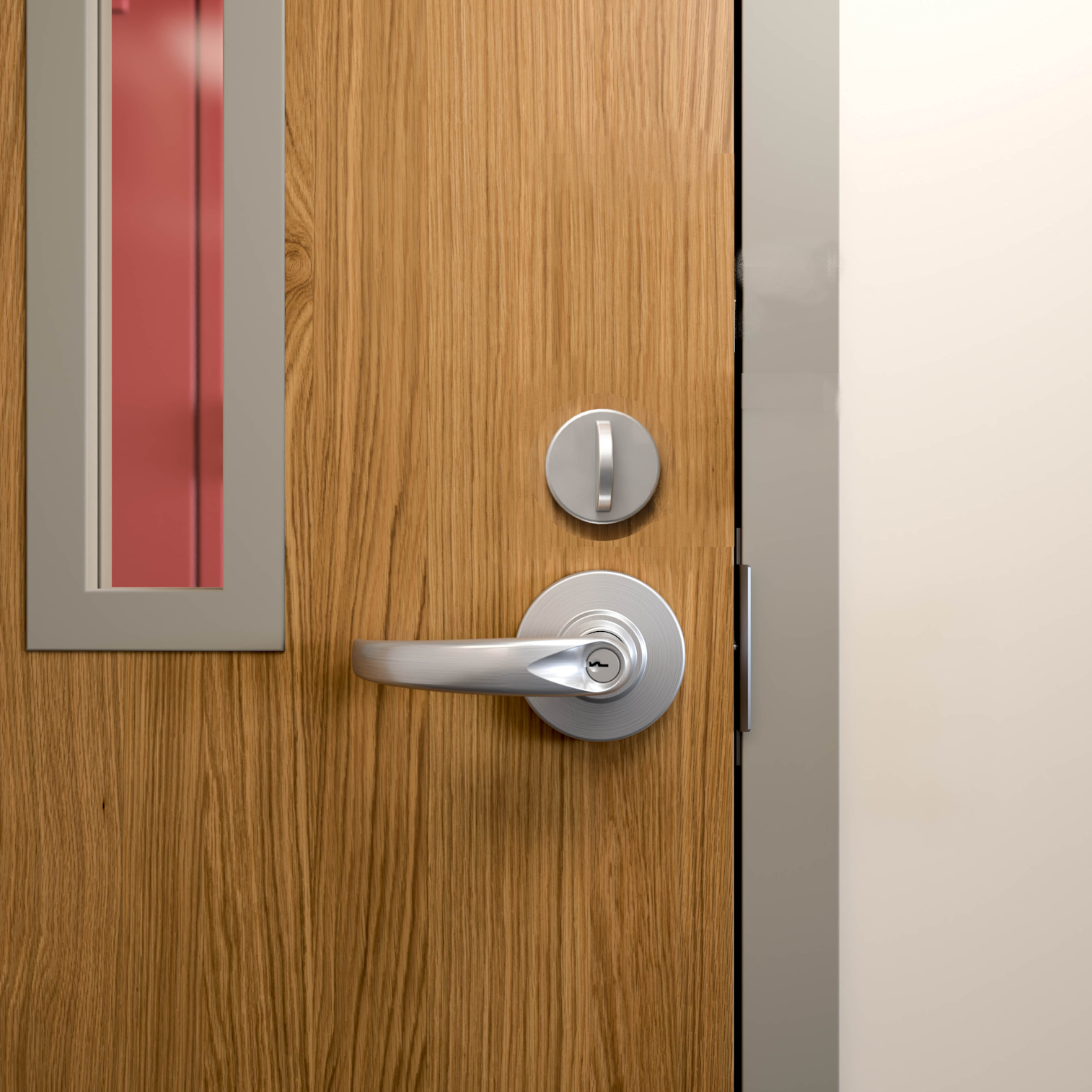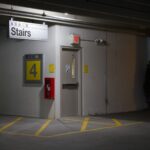 For any jurisdictions that have adopted NFPA codes and standards, this month’s NFPA Journal has a great summary of some of the major changes coming in the 2021 editions. One of the topics discussed in the roundup is the change to NFPA 101 regarding locks on existing classroom doors, which originated as TIA 1436, a retroactive change to the 2018 edition. Here’s an excerpt from the NFPA Journal article:
For any jurisdictions that have adopted NFPA codes and standards, this month’s NFPA Journal has a great summary of some of the major changes coming in the 2021 editions. One of the topics discussed in the roundup is the change to NFPA 101 regarding locks on existing classroom doors, which originated as TIA 1436, a retroactive change to the 2018 edition. Here’s an excerpt from the NFPA Journal article:
In a world where the dangers of fire and shooting violence exist side by side, the issue of door locks in K-12 classrooms has been a persistent challenge for NFPA 101 committee members. On one side of the argument, door locks must be robust to keep intruders out. On the other side, complicated or aftermarket locks could prevent occupants from escaping in a fire or keep emergency responders from entering.
With that in mind, the NFPA 101 committee has proposed allowing existing schools to install door locks and latches that require up to two releasing motions to open. This is a departure from the 2018 edition, which only permitted locks and latches with one releasing operation. (This requirement would still apply to new schools.) From a practical standpoint, the one-motion rule “resulted in some school districts having to spend a lot of money to retrofit the locking hardware on the doors, and many districts were just not able to meet the financial demands,” Harrington said. That led some to install aftermarket barricade devices, which are relatively low cost, but potentially difficult to remove during an emergency.
Moving to two locking motions “is a case where we need to balance the needs for life safety against the needs for security,” Harrington said. “While we’ve always required the one motion, as long as teachers and staff are trained on how to open those two-motion doors in an emergency, the committee felt that should be a safe arrangement while also providing the needed security.”
It looks like NFPA 101 will continue to allow existing classroom doors to have hardware that requires two releasing motions to unlatch the door. A few things to keep in mind:
- The International Building Code (IBC) and International Fire Code (IFC) require one releasing operation to unlatch the door, so the two-operation change would only apply where NFPA 101 (2018 edition or later) was the prevailing code.
- Only existing classroom doors are allowed by NFPA 101 to have 2 releasing operations. Classroom doors in new educational occupancies must unlatch with one motion. Most other egress doors are also required to unlatch with one operation.
- The intent of this change was not to allow classroom barricade devices, and there are other code requirements that will continue to apply. Releasing hardware must be mounted between 34 inches and 48 inches above the floor. The hardware must be operable without a key, tool, special knowledge or effort, and without tight grasping, pinching, or twisting of the wrist.
- The 2018 editions of NFPA 101, the IBC, and the IFC all require classroom doors to be able to be unlocked from the outside using a key, credential, or other approved means.
- Even in locations where two releasing motions are allowed, there may be ways to improve existing security without adding a separate deadbolt. If you want me to put you in touch with someone who can help with that, let me know!
The entire article can be read in the current issue of NFPA Journal.
You need to login or register to bookmark/favorite this content.






I don’t understand why this revision was made. To my knowledge, there is not one instance of a code-compliant lock that has failed during a school incident.
You’re right, Eric. The change was made because a school district in Maryland wanted to add deadbolts to their existing doors. BHMA did not support the change, but it was approved anyway.
– Lori